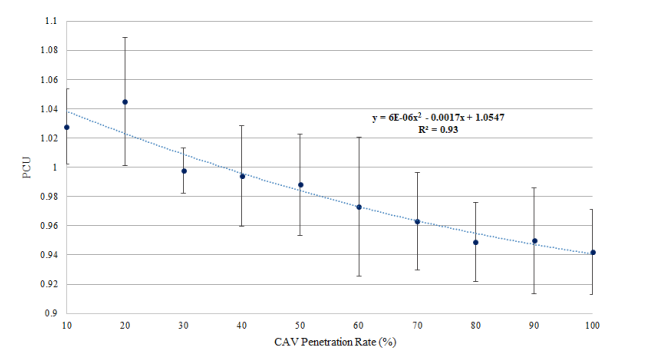
Connected autonomous vehicles (CAVs) are expected to gradually penetrate urban traffic and significantly affect traffic operations in a microscopic and macroscopic level. In this work, we aim to estimate the Passenger Car Unit (PCU) value of a CAV under different market penetration rate scenarios and further quantify its relationship between road geometry and control (road type, control type etc.) using microscopic simulation. The PCU value is estimated as the capacity change observed in the (network and link) Macroscopic Fundamental Diagram (MFD), when different mixtures of vehicle technologies may exist on the road network. For the purpose of this work, eleven future mobility scenarios are executed in the Aimsun Next mobility modeling software and the resulting PCU values are estimated. Classical statistical and machine learning regression models are further developed to identify the factors that may affect the estimated PCU values. Findings show that, in a network level, there exists a polynomial relationship between CAVs’ PCU and their penetration rate in the traffic mix. In a link level, the CAV PCU value is found to be highly affected by the observed lane flow, the section length, the control type, the road type, the number of lanes, the number of public transport lines of the road segment, as well as the market penetration rate of CAVs. The paper ends with a discussion on the implications of the results for the macroscopic modeling and the testing of CAV related management policies.
| ID | pc438 |
| Presentation | |
| Tags |







